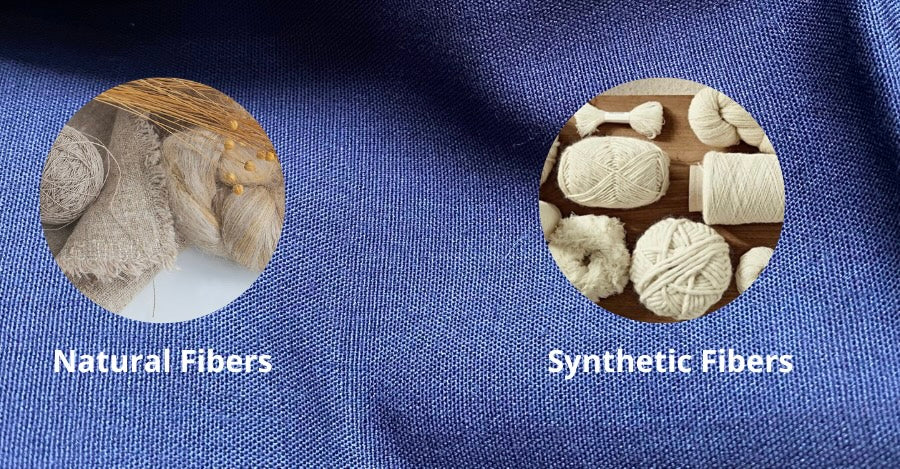
Natural vs Synthetic Fibers: Understanding the Key Differences
Share
Natural vs Synthetic Fibers: Understanding the Key Differences
When you pick up a t-shirt, a pair of jeans, or even your gym wear, the comfort, durability, and feel of that garment largely depend on the fibers it’s made of. In the world of textiles, fibers are broadly categorized into two groups: natural fibers and synthetic fibers. Both have unique properties, advantages, and limitations, which play an important role in clothing design and functionality.
Let’s dive deeper into what sets them apart.
What Are Natural Fibers?
Natural fibers are derived directly from plants, animals, or minerals. They are harvested, cleaned, and spun into yarns that are then woven or knitted into fabrics.
Common Types of Natural Fibers
- Cotton – Soft, breathable, and highly versatile; perfect for everyday wear.
- Linen – Derived from flax; lightweight, cool, and ideal for hot climates.
- Wool – Sourced from sheep; warm, insulating, and naturally elastic.
- Silk – Luxurious, smooth, and strong despite its delicate feel.
- Hemp – Strong, durable, and eco-friendly; gaining popularity in sustainable fashion.
Key Characteristics of Natural Fibers
- Breathable: Allow good airflow, keeping the body cool.
- Comfortable: Soft against the skin, with a natural hand-feel.
- Moisture Absorbent: Retain water and sweat, which can be refreshing in summer but slow to dry.
- Biodegradable: Break down naturally, making them eco-friendly.
- Sensitive to Environment: Can shrink, wrinkle, or get damaged by pests like moths.
What Are Synthetic Fibers?
Synthetic fibers are man-made, usually created from petrochemicals or regenerated raw materials through chemical processes. They are engineered to achieve specific performance qualities.
Common Types of Synthetic Fibers
- Polyester – Durable, wrinkle-resistant, and widely used in fashion and activewear.
- Nylon – Strong, smooth, and elastic; commonly used in hosiery and sports gear.
- Acrylic – Lightweight, warm, and often used as a wool substitute.
- Elastane/Spandex (Lycra) – Extremely stretchy, used in leggings and activewear.
- Rayon/Viscose – Semi-synthetic, made from regenerated cellulose, with a silky hand-feel.
Key Characteristics of Synthetic Fibers
- Durable: Resistant to wear, abrasion, and stretching.
- Moisture-Wicking: Pull sweat away from the skin, keeping garments dry.
- Quick-Drying: Ideal for performance and sportswear.
- Shape Retention: Hold their form and resist wrinkling.
- Non-Biodegradable: Long-lasting in landfills; raises sustainability concerns.
- Less Breathable: Can trap heat unless engineered with ventilation features.
When to Choose Which?
- Choose Natural Fibers if: You value comfort, breathability, eco-friendliness, and a classic feel. Perfect for casual wear, luxury apparel, and warm-weather clothing.
- Choose Synthetic Fibers if: You need durability, moisture management, stretch, or wrinkle resistance. Ideal for activewear, uniforms, and high-performance gear.
Final Thoughts
Both natural and synthetic fibers have their place in fashion and textiles. The choice depends on your priorities—whether it’s comfort and sustainability (natural) or performance and durability (synthetic). Interestingly, many modern fabrics blend the two, combining the best of both worlds: for example, a cotton-polyester t-shirt balances softness with strength, while spandex blends add stretch to everyday garments.
Understanding the difference helps you make better clothing choices, whether you’re shopping for comfort, style, or performance.
